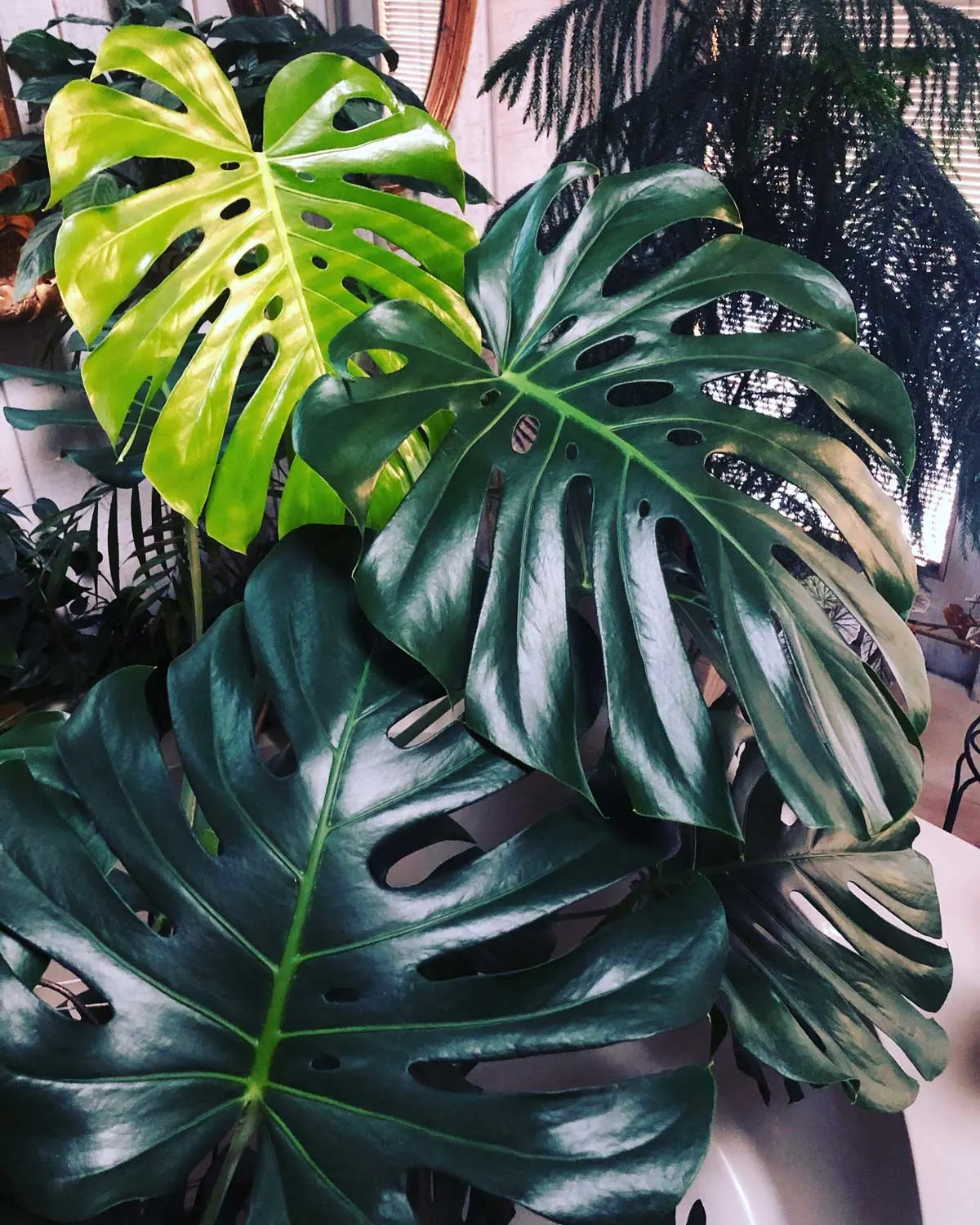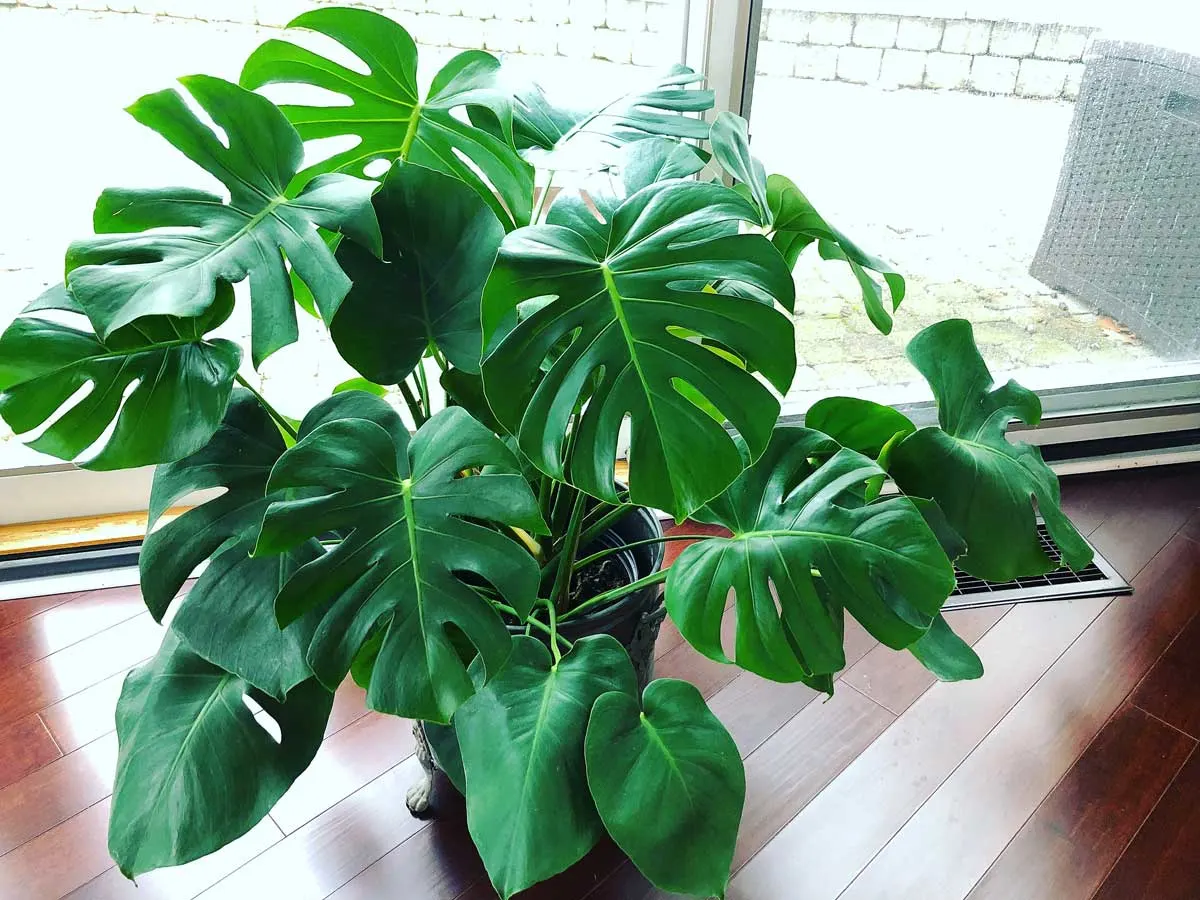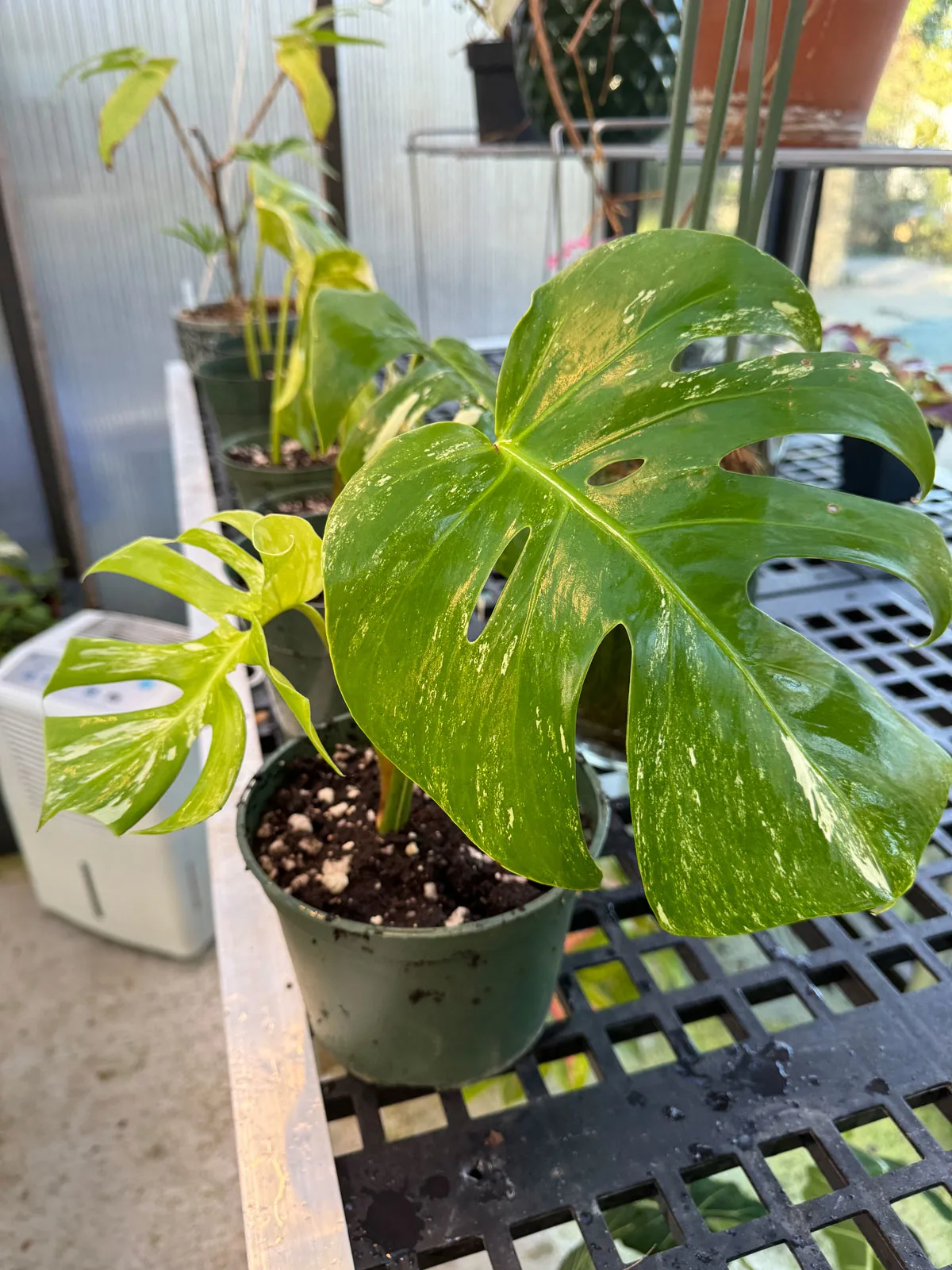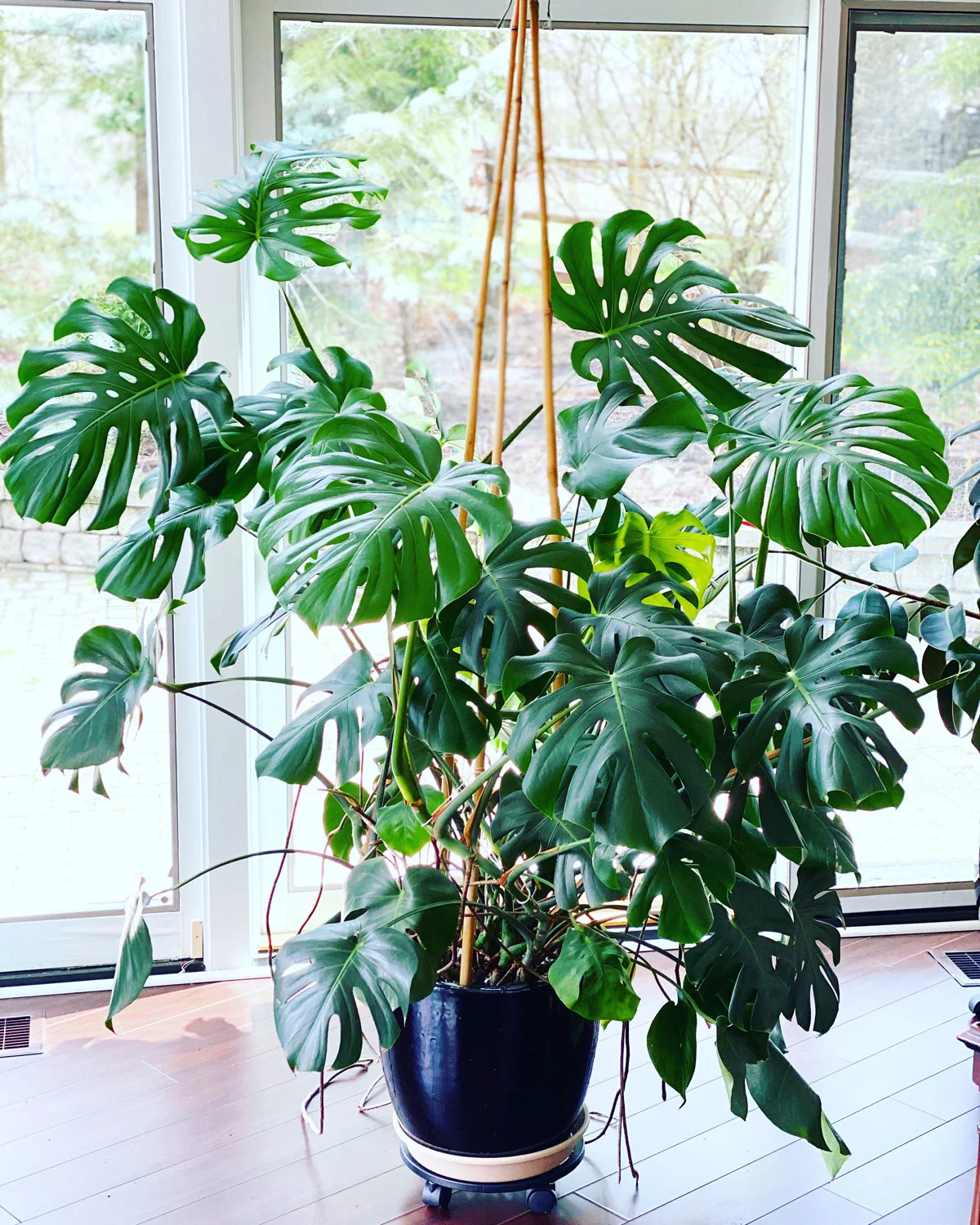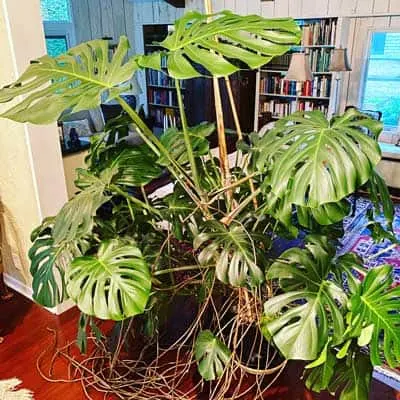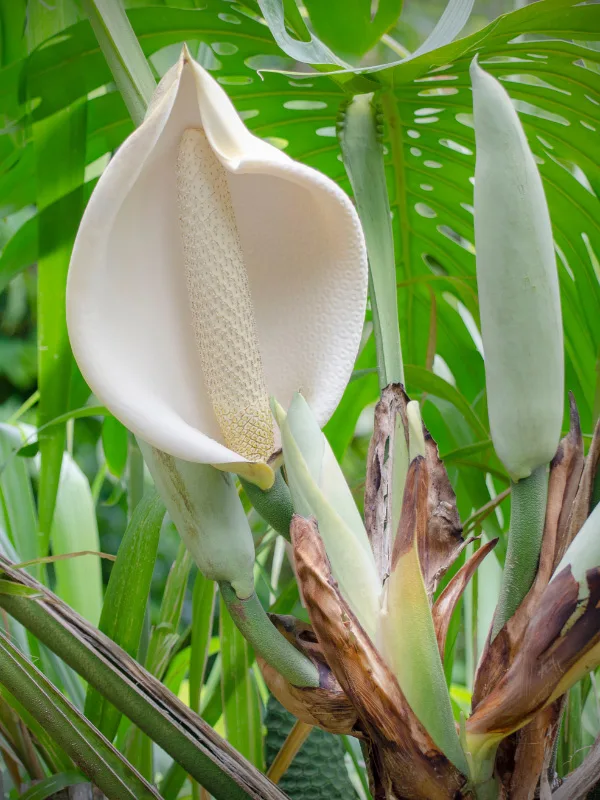Some of the links in this post may be affiliate links.
Variegated Monstera deliciosa. It is on everyone’s wish list for houseplants, and rightfully so! The foliage is stunning, but you’ll need to know how to best care for these plants since they are very hard to come by, and not to mention, extremely expensive! I’ve seen plants in 4 inch pots sell for over $1,000 in auction!
In this post, I will go over 7 very important tips to care for your variegated Monstera, including ideal cultural conditions, repotting, propagating and what to look for when buying online so you don’t get ripped off!
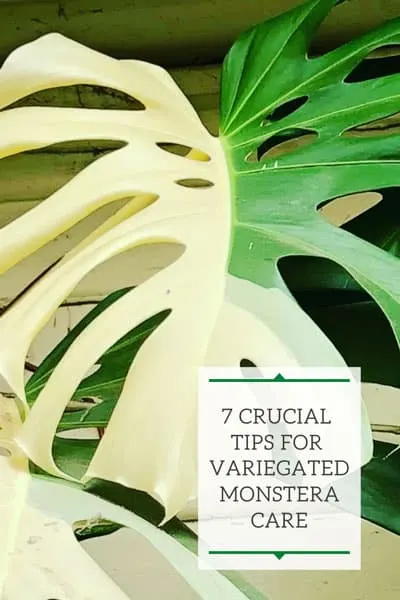
Whether you have Monstera deliciosa var. borsigiana albo-variegata, or even ‘Thai Constellation,” the care is the same, even though the color of the variegated leaves is different. I’m sure there are others that are available or that will be available in the future.
The main difference between those two I mentioned above is the color of the variegation. The albo-variegata has white variegation:
Whereas Thai Constellation has a yellowish variegation:
Now let’s go into how to care for and maintain these amazing plants.
Table of Contents
VARIEGATED MONSTERA CARE
1. LIGHT
Any variegated plant generally requires a little more light than its non-variegated (all-green) counterpart. In nature, these plants are actually very versatile when it comes to light requirements.
They will certainly tolerate low light, especially the all-green version, but if it’s too dark they will not grow well. In nature, they grow in the understory of the jungle. These conditions are fairly low light, but they will also climb up trees via their plentiful aerial roots to seek out higher light.
For your variegated Monstera deliciosa, find the brightest window you can but keep direct sunlight to a minimum. A couple hours of sunlight (early morning sun or late afternoon sun) is great.
Avoid long periods of direct sun though, especially mid-day direct sun, or your variegated leaves can potentially burn and turn brown.
If you live in an area with dark winters like me in Ohio, with short days, some direct sun in the winter is beneficial for all plants!
If you are lacking a good location in your home with natural light, you can definitely supplement with a good grow light.
2. WATERING
Is it always a good practice to water your plant thoroughly until water escapes the drainage holes. Then simply wait until about the top quarter of the potting soil is dry, and repeat. It’s as simple as that!
These plants are fairly tolerant though of more extreme conditions. Thinking about how they grow in nature, they will go through both a wet season and a dry season, so they are pretty tough plants.
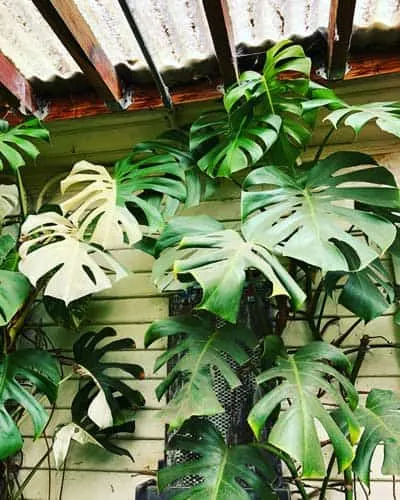
3. FERTILIZING
These plants are not heavy feeders, but they do need to be fed during the growing season for best results. I use my standard, go-to houseplant fertilizer, Dyna-Gro Grow.
This fertilizer is urea-free (therefore less likely to burn your plants), and contains all the macro and micro nutrients that plants need to thrive.
Although it is a little pricier than many fertilizers, aren’t your expensive plants worth it? I use this fertilizer for just about my entire houseplant collection.
Whatever your fertilizer label says, don’t use the full concentration. I like to use the low end of the range and water it with this solution every time I water throughout the growing season.
For example, the Dyna-Gro Grow label says to add 1/4 to 1/2 teaspoon per gallon of water for feeding every time you water. I add 1/4 teaspoon per gallon of water to be safe.
You should always measure both the fertilizer and the water carefully. I use a 1/4 teaspoon measuring spoon to measure the fertilizer and use a plastic gallon jug that I reuse.
Remember that if you measure incorrectly and your fertilizer solution is too concentrated, this can actually burn and cause the dreaded crispy, brown edges on your more delicate variegated leaves!
Over time, fertilizer salts can build up in the soil, so it is a good idea to periodically water your plant with plain water to flush out any built up salts in the soil.
Lastly, I withhold all fertilizer during the winter and water only with plain water when my plant isn’t growing much, if any.
4. SOIL
These plants are pretty forgiving with soil, but a good recommendation is to use 2 to 3 parts of a good potting soil (I like using Miracle Gro) mixed with 1 part perlite. Some people like to mix in some orchid bark as well.
You can do equal parts soil, perlite and bark mix. Keep in mind that this is a great mixture, but it will tend to dry out quicker since it’s so chunky/airy. Your plants will love it.
There is no magic mix. As long as you have a well drained soil and plenty of air to the roots (additives like perlite and orchid bark accomplish that), you will be good to go!
If you’re looking for an amazing potting mix that you can use straight out of the bag for your Monstera, check out the Tropical Climber Soil Blend from Oh Happy Plants. This is an amazing mix and you will get 10% off at checkout automatically if you use my link.
5. REPOTTING and CLIMBING SUPPORTS
When your variegated Monstera’s pot is full of roots and it needs more room, it’s time for a bigger pot.
The photo below is when I repotted my non-variegated Monstera deliciosa, but it illustrates the point and the instructions would be the same for your variegated Monstera.
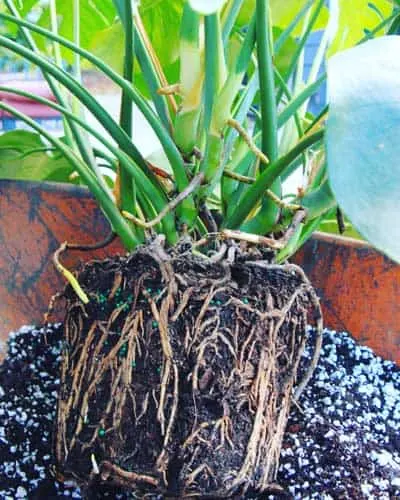
You can see that the pot was pretty crowded and the root ball came out in one piece. Time for a bigger pot!
I have two tips when repotting. Number one is to loosen the root ball. Don’t go too crazy with these roots, but just gently go around the root ball and loosen things up a bit. This will encourage the roots to grow into the new soil.
My next tip is for pot size and type. I would definitely recommend a heavier pot since your plant will need a support and grow and become top heavy over time. Terra cotta pots, glazed ceramic pots, or something similar that is heavier, are great choices.
As far as pot size, my normal recommendation is to go up one pot size. But for this plant, I will say that you can go up two pot sizes without any harm, and it will save you a little work.
For example, if your variegated Monstera is in a 6 inch pot, go ahead and place it into an 8 inch pot, or even a 10 inch pot at the most. Be sure that you use my soil mix and have your plant growing in the light that I recommend, especially if you go with the larger pot size. It will help ensure that your soil will dry out in a reasonable time. It’s all about a balance!
When you move your plant to a larger pot, this is also a great time to give your plant a climbing support. It will save you work and frustration.
I grew my own Monstera deliciosa var. borsigiana albo-variegata from a cutting that a friend gave me, and I made my own moss post which I love!
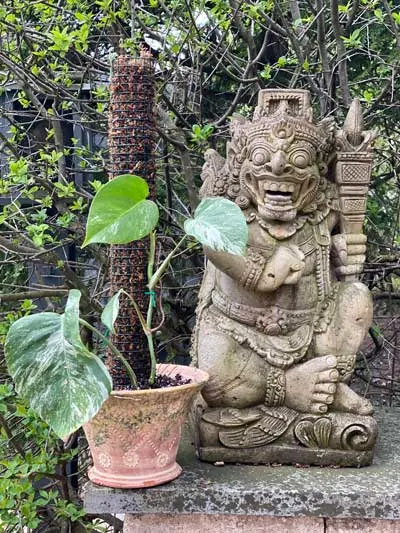
I haven’t been able to find any great moss posts on the market, so I made my own. If you’d like to make your own, check out my step-by-step blog post on how to make your own moss post support for your variegated Monstera!
They’re super sturdy and I’ve made a few already for other climbing aroids as well!
If you don’t want to make a moss post, which I suggest that you try because they’re super high quality and you will love it…you can use other supports as well. One other support I’ve made is to simply tie 3 bamboo stakes together (at the time of repotting is easiest).
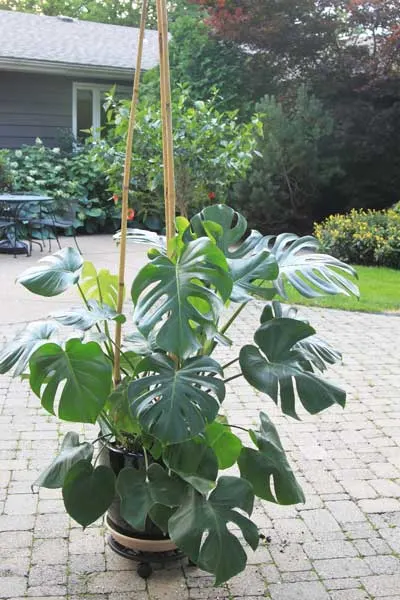
My plant has grown substantially since the photo above, but I would recommend using the thickest bamboo stakes that you can find. As the plant grows, you can tie the vines to the bamboo using garden twine, hemp twine, or whatever you prefer.
6. PROPAGATING
The simplest way to propagate these plants is by stem cuttings. You can do single node cuttings with one leaf.
My own variegated plant that I have came from this type of cutting.
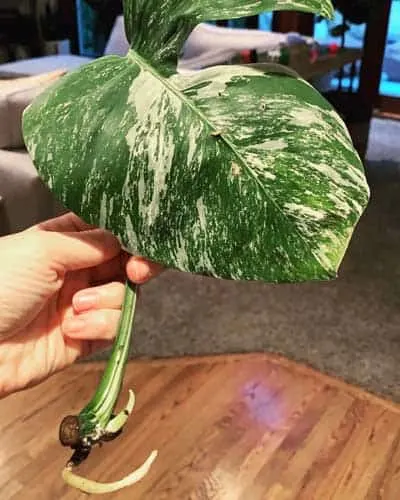
This was placed in water to root. It eventually looked like this.
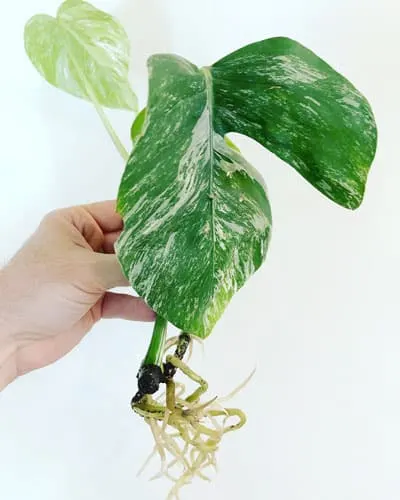
One thing to note about when you make a cutting (or if you buy a cutting online) is to make sure that it is a proper cutting that will root. You will need to make sure that you are getting a portion of the vine as well, and not just the petiole (the part attached to the leaf.)
Here’s an example of where to cut. You’ll also need to make sure that you get enough of the vine so that you include what is called the “eye.”
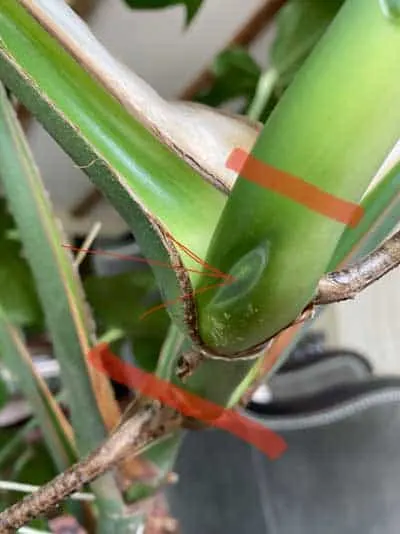
In the photo above, I’ve illustrated this point. The two thick red lines indicate where you can cut. I have an arrow pointing to the “eye.” The eye is where your new vine will grow so you’ll want to make sure that you include this in your cutting.
In addition, your cutting will likely have some aerial roots already. You can see an aerial root on the right side of the photo right about in the middle.
Place your cutting in water to root, or even straight into soil. Either way will work. Regardless, you can place a clear plastic bag over it to prevent wilting (if you notice wilting) because this helps increase humidity.
This is important because your cutting is transpiring water but can’t replace it yet because there is little to no root system, so the increased humidity will help.
Increasing humidity is always a great idea especially while propagating. It will help ensure success and places less stress on the cutting. Once established, although these plants do love higher humidity (given their jungle habitat), they are very tolerant of average indoors conditions.
Check out my blog post on increasing humidity for houseplants for various effective ways to do this.
Lastly, if you choose to place your fresh cutting directly into soil to root, water it and keep it relatively moist as this will encourage rooting.
Check out my blog post on propagating Monstera in water or for a more focused post, check out how to propagate variegated Monstera, for more details.
7. PRUNING TO MANAGE VARIEGATED GROWTH
Owning a variegated plant is a little bit more work than growing the non-variegated counterpart.
You know those all white leaves that people love and adore?
Although they are definitely stunning and gorgeous, since they have no chlorophyll, the will not last for a long time! Eventually these leaves will die, but you can enjoy them for a short time while they do last!
So if you have a variegated Monstera, you will need to do some maintenance and pruning to encourage leaves with more balanced variegation.
If your plant produces all white leaves, or starts producing all green leaves, this is not desirable and you’ll have to prune.
Start scanning your vine visually. Start at the tip of the vine and work your way down. Cut the vine back to a leaf that has good, balanced variegation (not too white and not too green!) When you trim your vine, make sure that you can see the growing eye (like I showed earlier on in this article).
The growing eye of the plant should then produce a vine with more balanced variegation, and will result in a healthier, more beautiful plant!
For more details about why variegation occurs and the different forms, check out this article from Pistil nursery on the science of variegated plants. Pretty fascinating stuff!
You can use this exact same technique in order to manage the variegation on your Philodendron Pink Princess and your variegated Syngonium as well.
MONSTERA DELICIOSA TOXICITY
Monstera deliciosa is toxic both to cats and dogs according to the ASPCA due to calcium oxalate.
I hope you’ve found this blog post useful and good luck with your prized plants!
RELATED POSTS
Looking for other interesting Monsteras to grow? Check out my blog post on 15 Amazing Monstera Varieties to add to your collection. There are many more interesting species to grow other than the plain old, green Monstera deliciosa.
Having issues growing your Monstera deliciosa? Check out my Monstera Problems blog post for many of the common problems (and solutions) that you may be experiencing with your plant.

